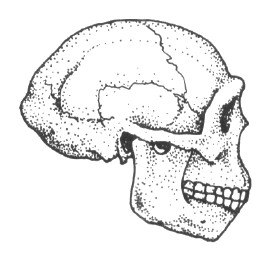Copyright © Jim Foley || Email me


Most of the study on these fossils was done by Davidson Black until his death in 1934. Franz Weidenreich replaced him and studied the fossils until leaving China in 1941. The original fossils disappeared in 1941 while being shipped to the United States for safety during World War II, but excellent casts and descriptions remain. Since the war, other erectus fossils have been found at this site and others in China.
The illustration above is of a reconstruction done by Franz Weidenreich, based on bones from at least four different individuals (none of the fossils were this complete).
Most creationists have considered the Peking Man fossils to be those of apes, or, even more improbably, monkeys, but in recent years the view of Lubenow that they were humans has been gaining ground.
Compare Peking Man with Homo erectus
Fossil Evidence for Human Evolution in China (lots of excellent material, including a page with pictures and descriptions of some of the Peking Man fossils)
Peking Man World Heritage Site
This page is part of the Fossil Hominids FAQ at the talk.origins Archive.
Home Page |
Species |
Fossils |
Creationism |
Reading |
References
Illustrations |
What's New |
Feedback |
Search |
Links |
Fiction
http://www.talkorigins.org/faqs/homs/peking.html, 04/28/97
Copyright © Jim Foley
|| Email me 